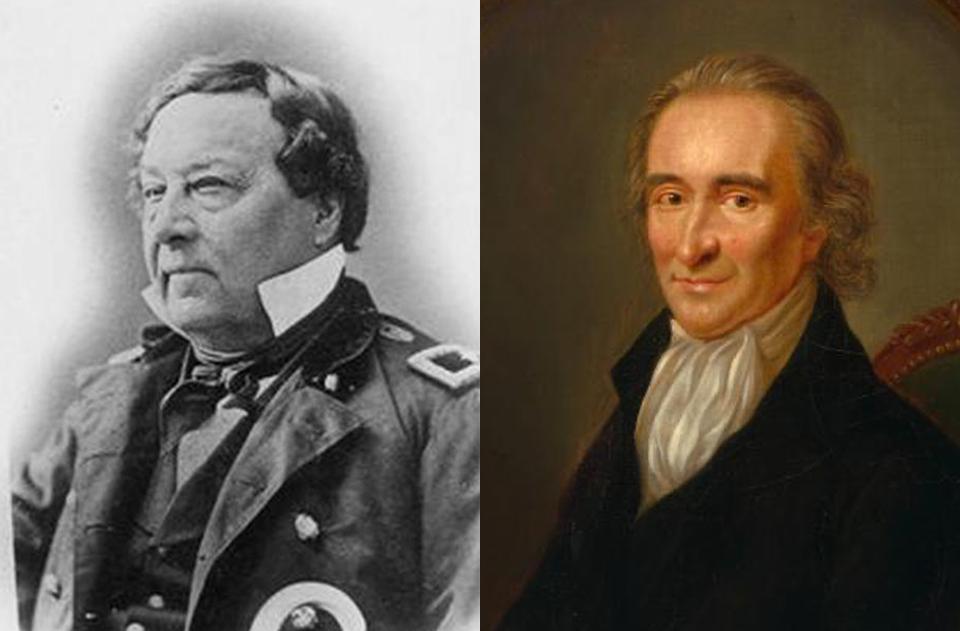Bonneville and Tom Paine
By Jett B. Conner
I’m a retired political scientist, not a historian. My interests in American history focus mostly on the 18th century; my doctorate was on Thomas Paine’s political ideas and contributions to the American Revolutionary period. Nevertheless, that work eventually led me to Benjamin Bonneville and his career in the early American West.
As often happens, focusing on a topic opens new sideroads. As I was writing my dissertation, I learned of two Bonneville boys, and that they had immigrated to America after the French Revolution and had become wards of Paine, the radical writer and activist. But they had little to do with my project, so I set them aside. Vaguely, I wondered if I would ever get back to them.

Tom Paine, right, famed revolutionary pamphleteer and author of “Common Sense,” had lived with the Bonnevilles outside Paris for several years after the French Revolution—and returned the favor by hosting them when they came to America in 1803. National Portrait Gallery.
Not long ago, I started researching Paine again, and writing about him for an online publication, the Journal of the American Revolution. Out of that effort came my book, John Adams vs. Thomas Paine, Rival Plans for an Early Republic, an exploration of early American political thought.
Afterward, I found time to research the Bonneville boys too, and realized that Benjamin had made a big name for himself in the West. The ancient Lake Bonneville! Bonneville Salt Flats! Bingo! How had I missed the connection to Paine all these years?
After the American Revolution, Paine got caught up in revolutionary happenings in his native England and then in France. He had gone to Europe to seek financial backing for an iron bridge he had designed and hoped to have built. But European politics nearly cost him his life.
He met the Bonneville family in France when he and his friend Nicholas Bonneville, a publisher and Benjamin’s father, managed to escape the guillotine during the Reign of Terror. So, when Paine returned to America in 1802, he invited the family to join him. Nicholas stayed behind to protect his printing business during the rise of Napoleon, but his wife and young boys came, and Paine helped rear the two boys until his death in New York, in 1809. By all accounts, he was very fond of them.
As a long-time visitor to Yellowstone (my wife and I drive annually to the park from Denver to watch for wolves and other wildlife), I got interested in the Bonneville story, knowing he was the first person to lead a wagon train across South Pass.
So, after combining several Yellowstone trips with a few extra sideroads and learning more about the fur trade era in the process, I decided to write another book, this time about Bonneville’s western explorations and adventures, Captain Benjamin Bonneville’s Wyoming Expedition, the Lost 1832 Report. As that book and the current encyclopedia article show, Benjamin’s accomplishments in the West would make Paine proud.
Jett Conner is retired from the academic world and lives in Denver.
